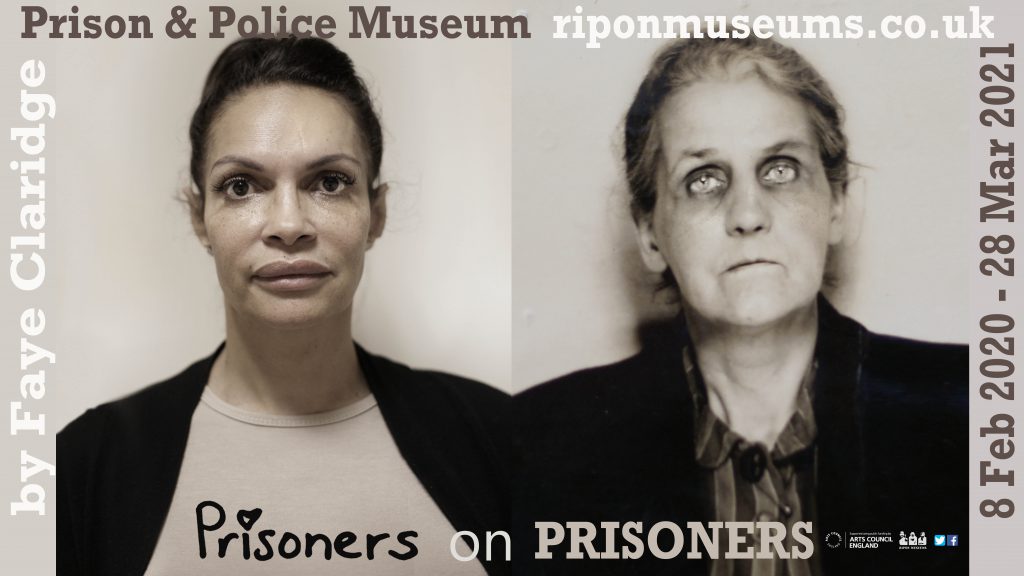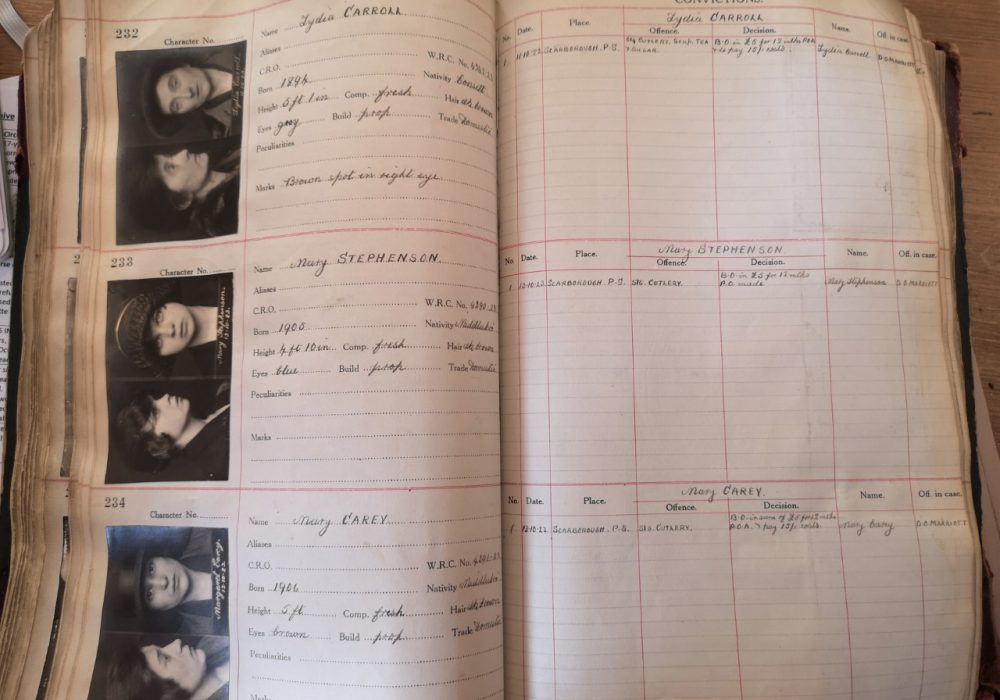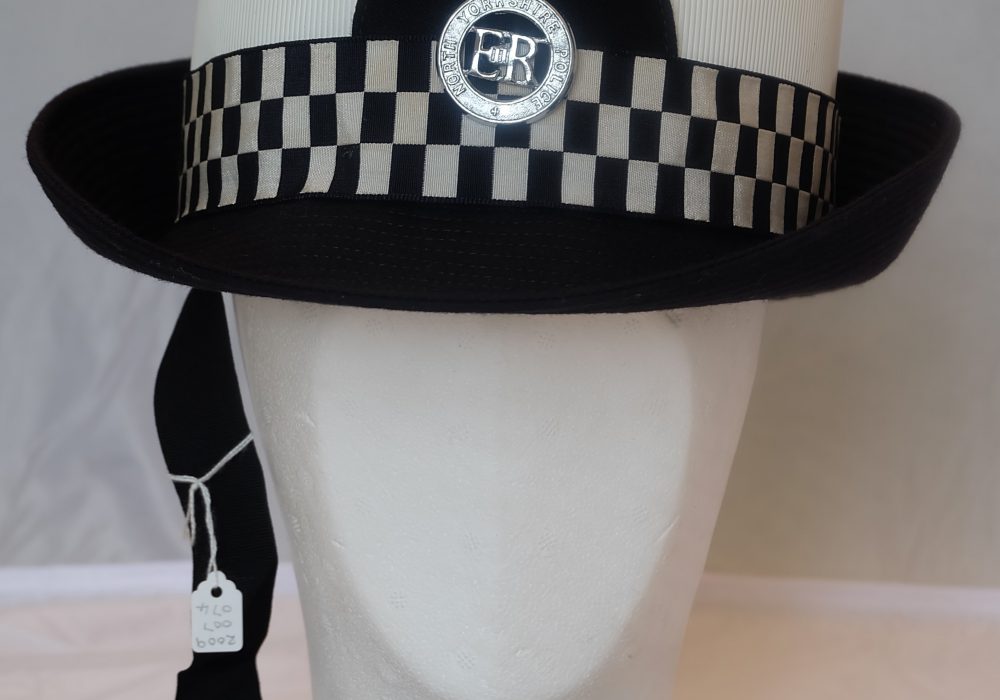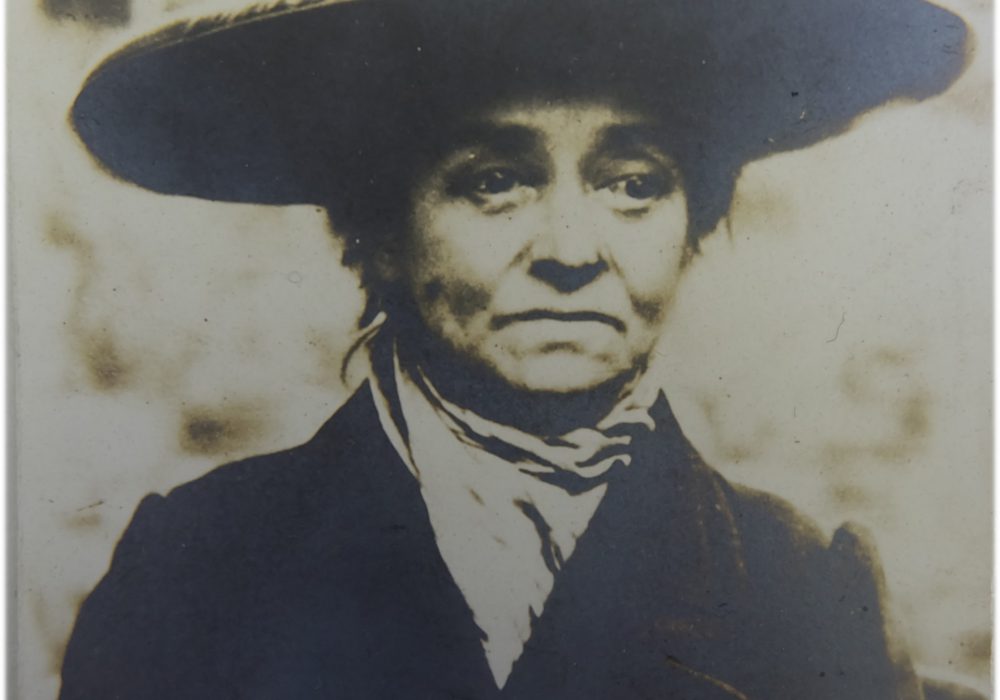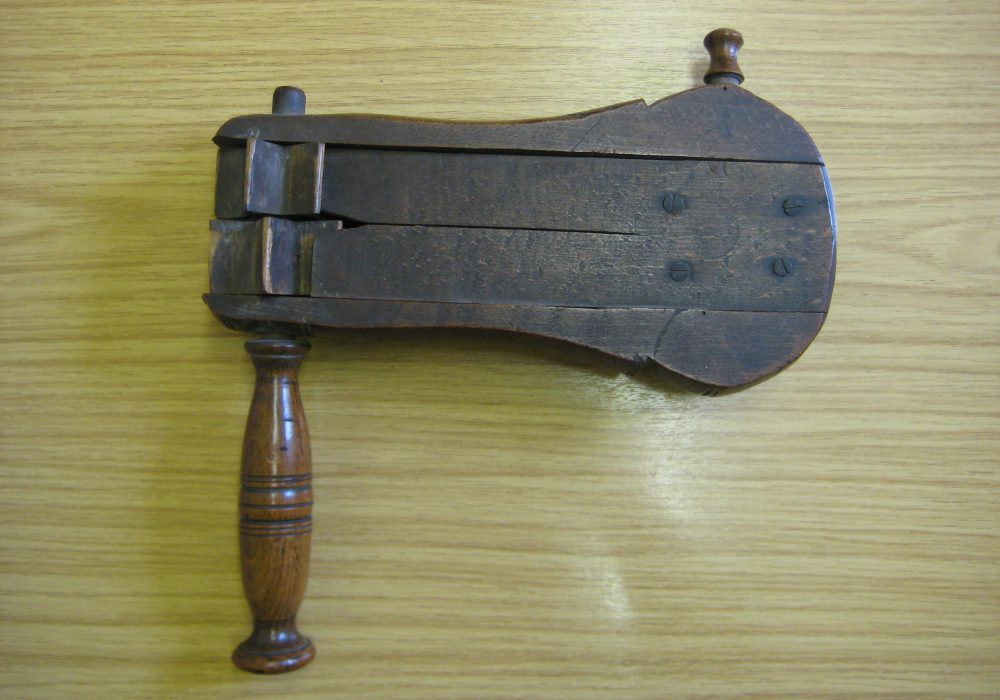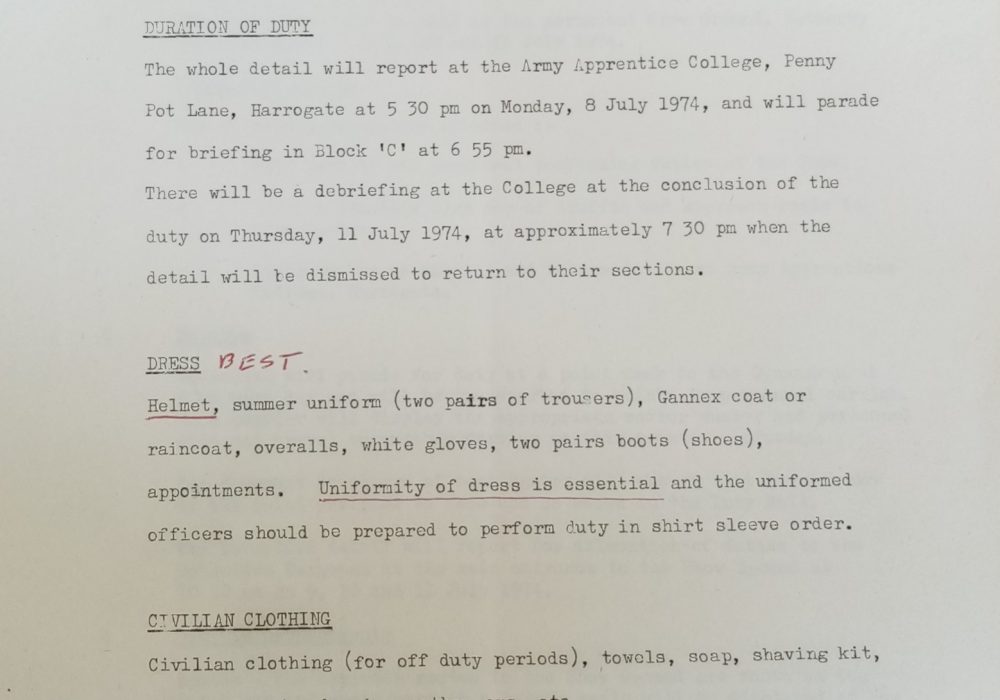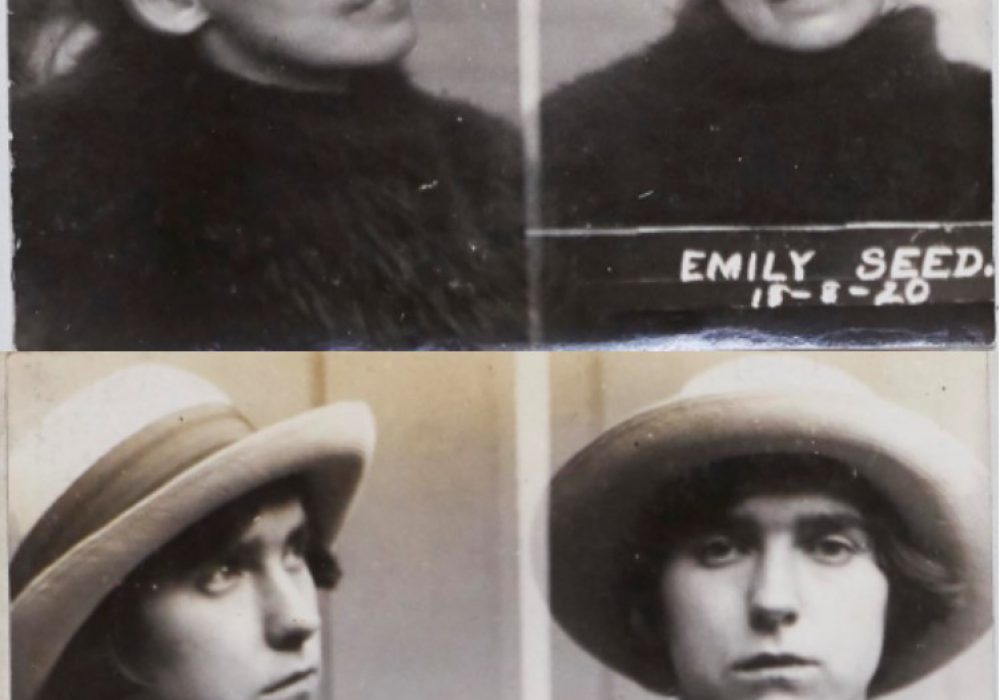8 February 2020 – 28 March 2021
On display at the Prison & Police Museum
This art installation by Faye Claridge shared the experiences of current and historic female prisoners through audio, textile and photography. The exhibition was located in Cell 13 of the Prison & Police Museum.
Faye connected historic prison archives with inmates at HMP Askham Grange, to explore similarities and differences in their lives and prison experiences. Through prison workshops for participants to ‘adopt’ a prisoner from the museum’s Edwardian and Victorian criminal record books, Faye made recordings of their comparisons and created portraits to link with archive mugshots. The artwork gave prisoners a way to share their perspectives and for museum visitors to consider the individual lived experience of justice systems.
Artist Faye Claridge said: “Throughout the project it was fascinating to hear present-day women in prison relating to the museum archives, finding similarities and differences in their lives and experiences of the justice system. It not only brought the archives to life, but also created a connection through time that I think the participants benefitted from. Some visitors commented on how the project’s combination of past and present gave a sense of perspective, others remarked on being inspired by the participants and their openness. Many said Prisoners on Prisoners was impactful and had made them think, about rehabilitation, family and much more.”
Neil Dembry of HMP Askham Grange said: “The Prisoners on Prisoners exhibition was an exciting collaboration between Ripon Prison Museum and Askham Grange Prison in York. The serving prisoners were fascinated to read the archives and see images of female prisoners dating back to the 1800s, and the difficulties they faced. What was apparent in the discussions that followed is that the offenders today face many of the same issues as they did over 100 years ago. Whilst the punishments are not as severe today the courts continue to incarcerate vulnerable women. The prisoners were able to reflect that their journeys into offending behaviour were very similar in that many came from a history of abuse, usually by men. The exhibition provoked the question of whether anything has actually changed in the intervening century, or can more be done to within the criminal justice system to support abused women and to reduce their risk of offending in the future?”
Experience part of the exhibition by listening to one of the recordings.
